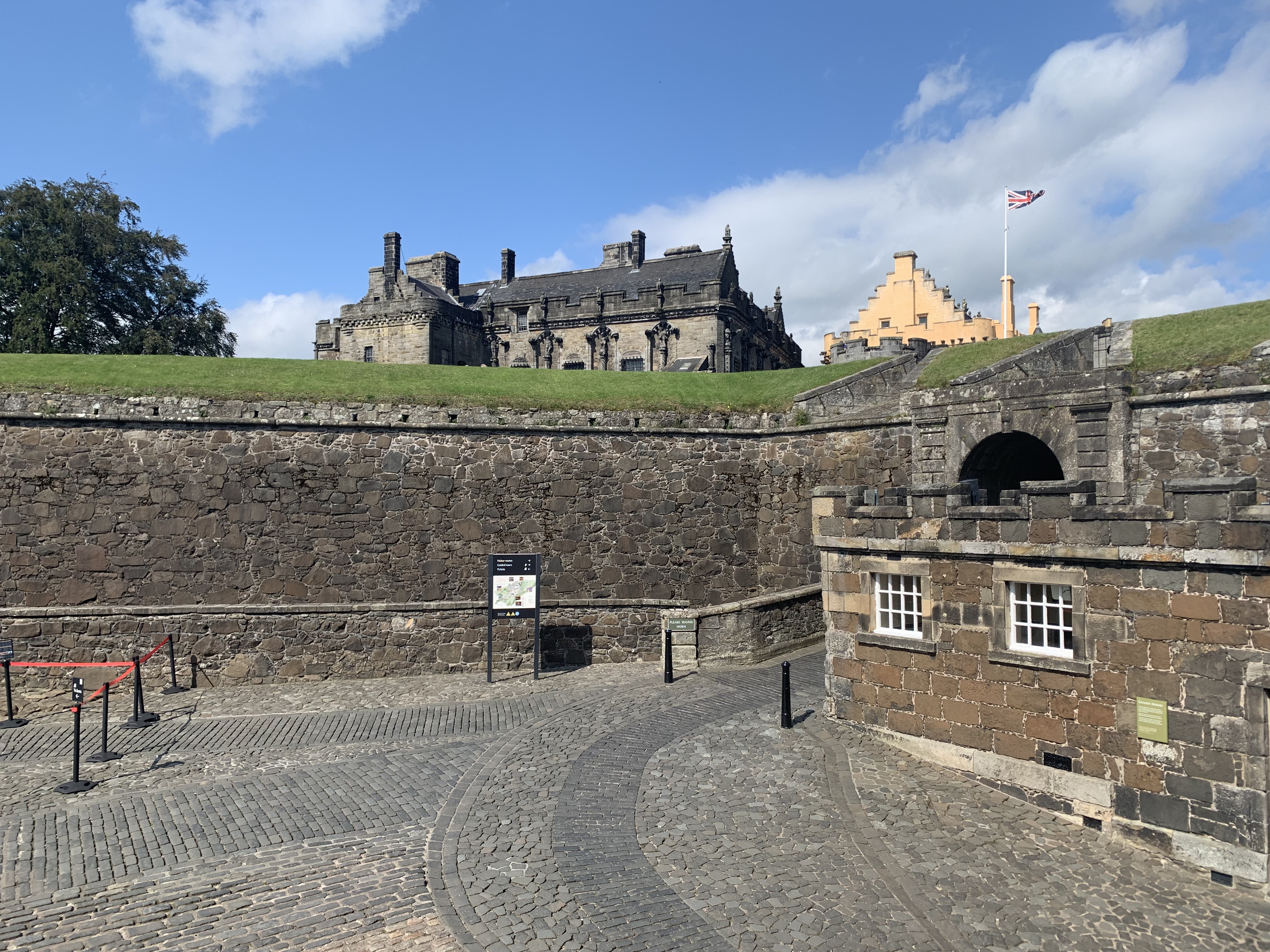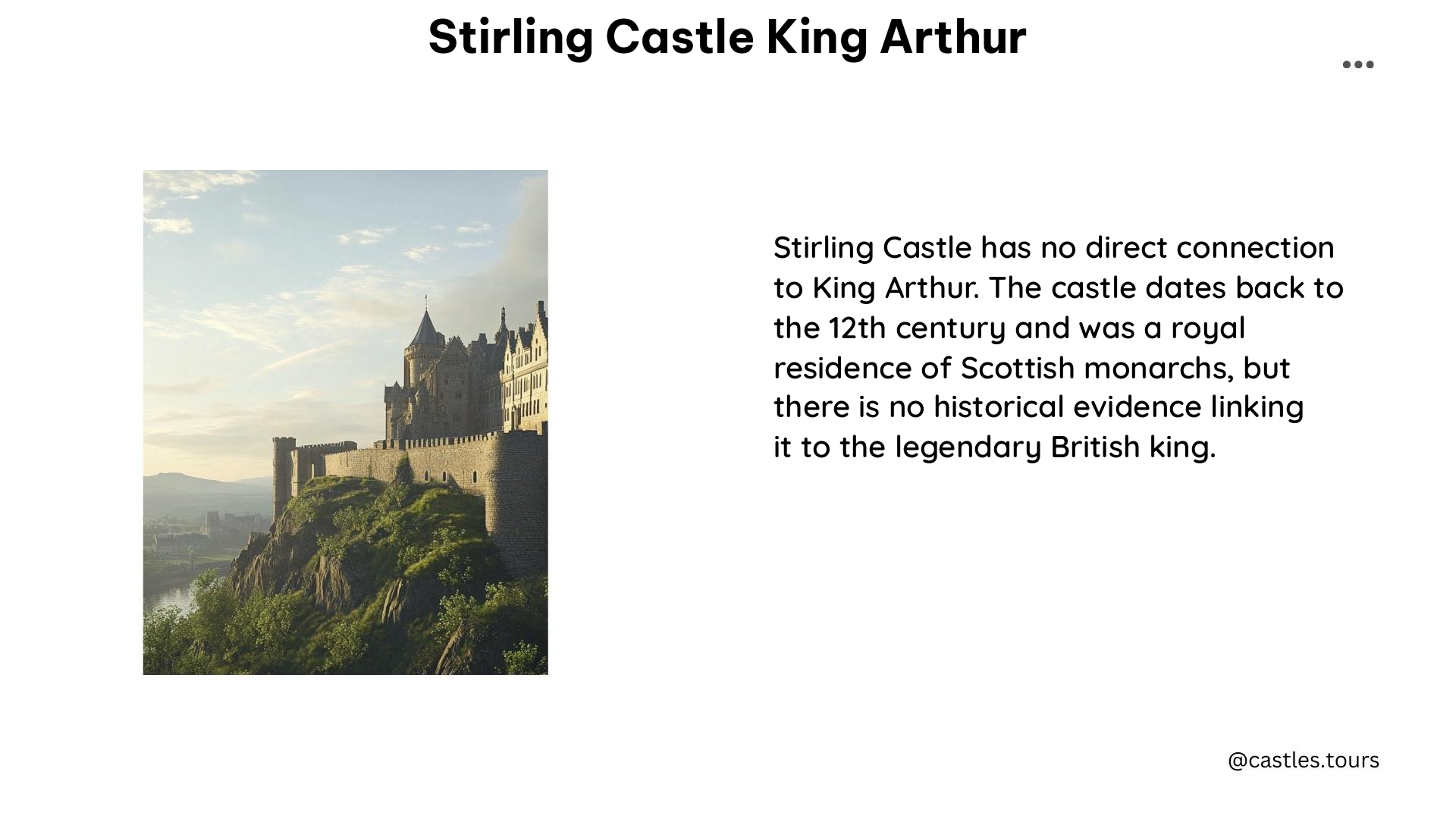Stirling Castle, located in Stirling, Scotland, is one of the largest and most historically significant castles in the country. While there is no definitive historical evidence that King Arthur’s Round Table was located at Stirling Castle, the site is closely connected to the legendary king through various legends and historical accounts.
The King’s Knot and the Round Table

The King’s Knot, a tiered earth formation below the south-west wall of Stirling Castle, is believed to be the remains of a 17th-century garden. However, this structure has long been rumored to be the site of King Arthur’s Round Table. The first written mention of this connection dates back to a poem by John Barbour in 1374, which describes the victory of Robert the Bruce at the Battle of Bannockburn and mentions the Round Table.
Scottish Kings and the Arthurian Legend

Scottish kings, such as James IV, were fascinated by the stories of King Arthur and sought to legitimize their rule by connecting their ancestry with his. James IV built a jousting ground at Stirling, modeled after early medieval castles, which was likely inspired by the Round Table legend. Additionally, James IV’s court poet, Sir David Lyndsay, wrote about a Round Table present in the Castle in his poem “The Testament and Complaint of the Papyngo”.
Archaeological Findings
Archaeologists have discovered remains of ditches and structures beneath the King’s Knot, which date back to the Roman and Sub-Roman periods, around the time when King Arthur is believed to have lived. These findings, while not directly linking to King Arthur, suggest that the area has a much older history than the current castle buildings.
The Significance of the King’s Knot
The King’s Knot is a significant feature in the legend of King Arthur at Stirling Castle. While its origins are likely from the 17th century, it is believed to be built on top of older structures, possibly dating back to the Roman and Sub-Roman periods. The Knot’s connection to King Arthur’s Round Table is based on medieval poems and stories, which may have been used as propaganda by Scottish kings to associate their rule with the legendary king.
Visiting Stirling Castle
For those interested in visiting Stirling Castle, it is open year-round, with varying hours depending on the season. The castle offers guided tours, exhibitions, and events that showcase its rich history and architecture. Visitors can explore the Royal Palace, the Great Hall, and the Chapel Royal, among other attractions.
References
- Wikipedia. (n.d.). Stirling Castle. Retrieved from https://en.wikipedia.org/wiki/Stirling_Castle
- Remembered Lore. (2022, September 2). King Arthur at Stirling Castle. Retrieved from https://rememberedlore.com/2022/09/02/king-arthur-at-stirling-castle/
- Historic Environment Scotland. (n.d.). Stirling Castle: History. Retrieved from https://www.historicenvironment.scot/visit-a-place/places/stirling-castle/history/
- Stirling Council Archives Blog. (2022, May 25). Stirling and the Legend of King Arthur. Retrieved from http://www.stirlingarchives.scot/2022/05/25/stirling-and-the-legend-of-king-arthur/
- Legend of King Arthur. (n.d.). Stirling, Scotland, King Arthur Legend. Retrieved from http://www.legendofkingarthur.co.uk/scotland/stirling.htm
